
Dr. Annaka M. Clement is a remarkable scientist, whose expertise lies in ocean rocks and fossils. She is a sedimentary geologist and invertebrate paleontologist, dedicated to unraveling the mysteries of Earth's ancient ecosystems. Her journey into the world of science and her current role as a postdoctoral scholar at the Denver Museum of Nature & Science are truly inspiring. Dr. Clement's passion for science and her dedication to sharing her knowledge serve as a beacon of hope for young minds aspiring to explore the wonders of the natural world.
Dr. Clement will be attending our annual Girls & Science event at the Denver Museum of Nature & Science on March 1. Girls & Science is a hands-on event that illuminates the myriad possibilities of future careers in science, technology, engineering and math (STEM). This event is dedicated to sparking a passion for science through interactive exploration and play. Girls & Science is committed to inspiring young girls by connecting them with female mentors in STEM fields, fostering curiosity and unveiling diverse opportunities within science, technology, engineering, arts and math.
Ahead of this year's Girls & Science event at the Museum, we asked Dr. Clement a few questions:
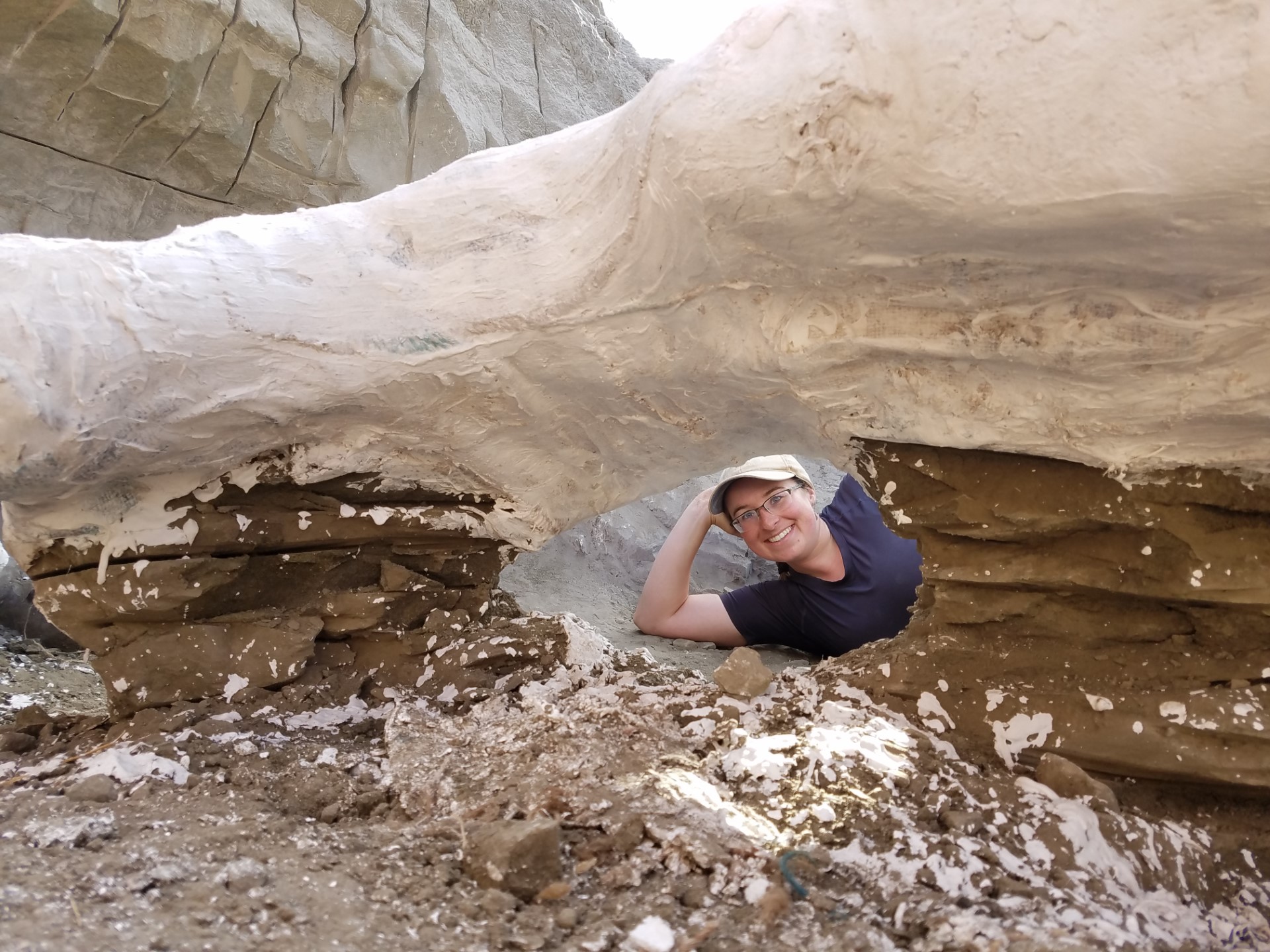
Dr. Clement poses behind the field jacket containing a hadrosaur in 2016 during the Museum's Kiparowits field season. (Photo/Matt Hess)
What led you to pursue a career in science?
I've always been fascinated by rocks and fossils, even as a kid. My interest in Earth science evolved over time. I began my journey by studying geoscience and environmental studies at the University of Wisconsin-Madison. It was during my undergraduate years that I realized my passion for the natural world.
What is your role at the Museum?
At the Museum, I'm a scientist in the Department of Earth Sciences. My job involves studying fossils and rocks to learn about ancient oceans and the creatures that inhabited them. I'm particularly interested in how temperature and water depth influenced these creatures.
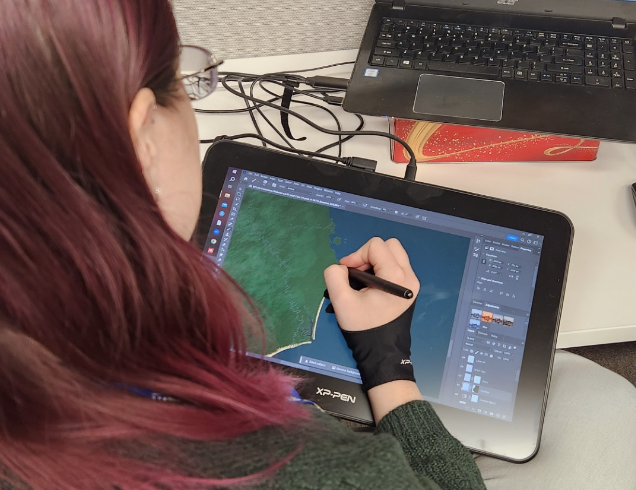
Dr. Clement working on creating realistic “satellite” images on a tablet of Colorado from the Jurassic. (Photo/Grace King)
How did you prepare for this role?
I have always liked rocks and fossils, even as a kid. Exactly what I liked about Earth science changed through the years, but I always found the past and how we piece together ancient history fascinating. I went to college at the University of Wisconsin-Madison to study geology and engineering and soon realized that I would be an awful engineer, so I switched fully to geology and studied a little bit of everything in Earth Science. After college, I decided to study stratigraphy, how sedimentary rocks are deposited through time in layers, at the University of Georgia for my Master’s degree. After my Master’s, I took a few years off and worked at Cave of the Mounds National Natural Landmark designing and leading outdoor and underground field trips. This was fun, but I missed doing research, so in 2018 I decided to get my PhD in Geoscience at North Dakota State. This time I studied both stratigraphy and paleoecology. This means that I studied whole ecosystems in the past, both the physical environment (rocks) and the animals that lived in them (fossils) and how they changed through time. I got to do fieldwork in Nevada and New Zealand. After graduating, I came here to the Denver Museum of Nature & Science as a Postdoctoral Scholar, which means I get to do more research on many ongoing museum projects and my own interests.
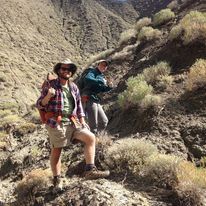
Dr. Clement going out to prospect for fossils with field buddy Will Bullard during the Museum's 2016 Kiparowits field season. (Photo/Annaka Clement)
What projects are you currently working on?
I'm involved in several exciting projects at the Museum. One of them is "Paleomapping," where we create maps of ancient landscapes in the Rocky Mountain region. I'm also exploring ways to incorporate fossil data into these maps using Environmental Niche Modeling. Additionally, I'm working on projects related to trilobites in the Cambrian, ecosystems in the Devonian Dyer formation and the environments represented in the rocks at Calhan Paint Mines.
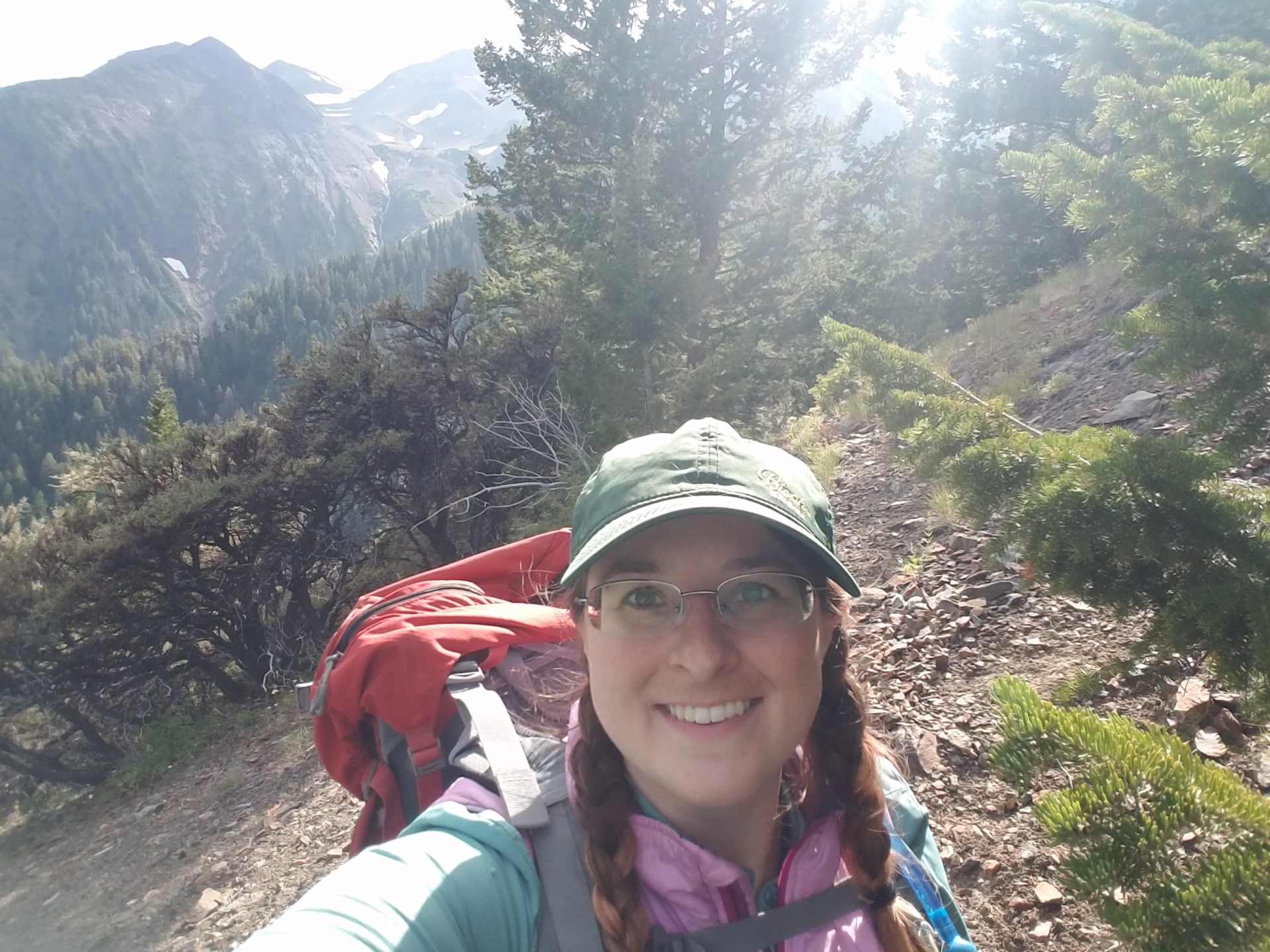
Dr. Clement scouting field locations for invertebrate paleoecology in the Wallowa-Whitman National Forest. (Photo/Annaka Clement)
What do you love most about your job?
I love solving puzzles, and every day doing research and studying the Earth is a new puzzle. Nature ran all of these very cool experiments in the past, and it is my job to figure out what those were and how all of those events led to the world we know today.
What's your greatest passion?
In my scientific career, I'm passionate about studying mass extinctions and the periods just before them. This allows us to understand how ecosystems were structured before and after extinctions, whether they were abrupt or gradual, and if there were warning signs. Outside of my career, I'm deeply passionate about science literacy and believe it's essential for everyone to appreciate the role of science in our daily lives.
Any words of inspiration?
I want aspiring scientists to know that they don't have to be geniuses to pursue a career in science. Curiosity and hard work are the keys to success. No matter where you come from, what you look like, or your gender, there's a place for you in science.
Favorite memory from the field?
One of my favorite memories involves a field assistant who tried to collect a massive stromatolite fossil. He did it because he found it incredibly cool. Our professor even promised to display it with his name on a plaque if he could get it back to the department. Although he couldn't bring it back, his determination left a lasting impression on me.
What's your favorite hobby?
I enjoy making props and costumes, tapping into my creative side.
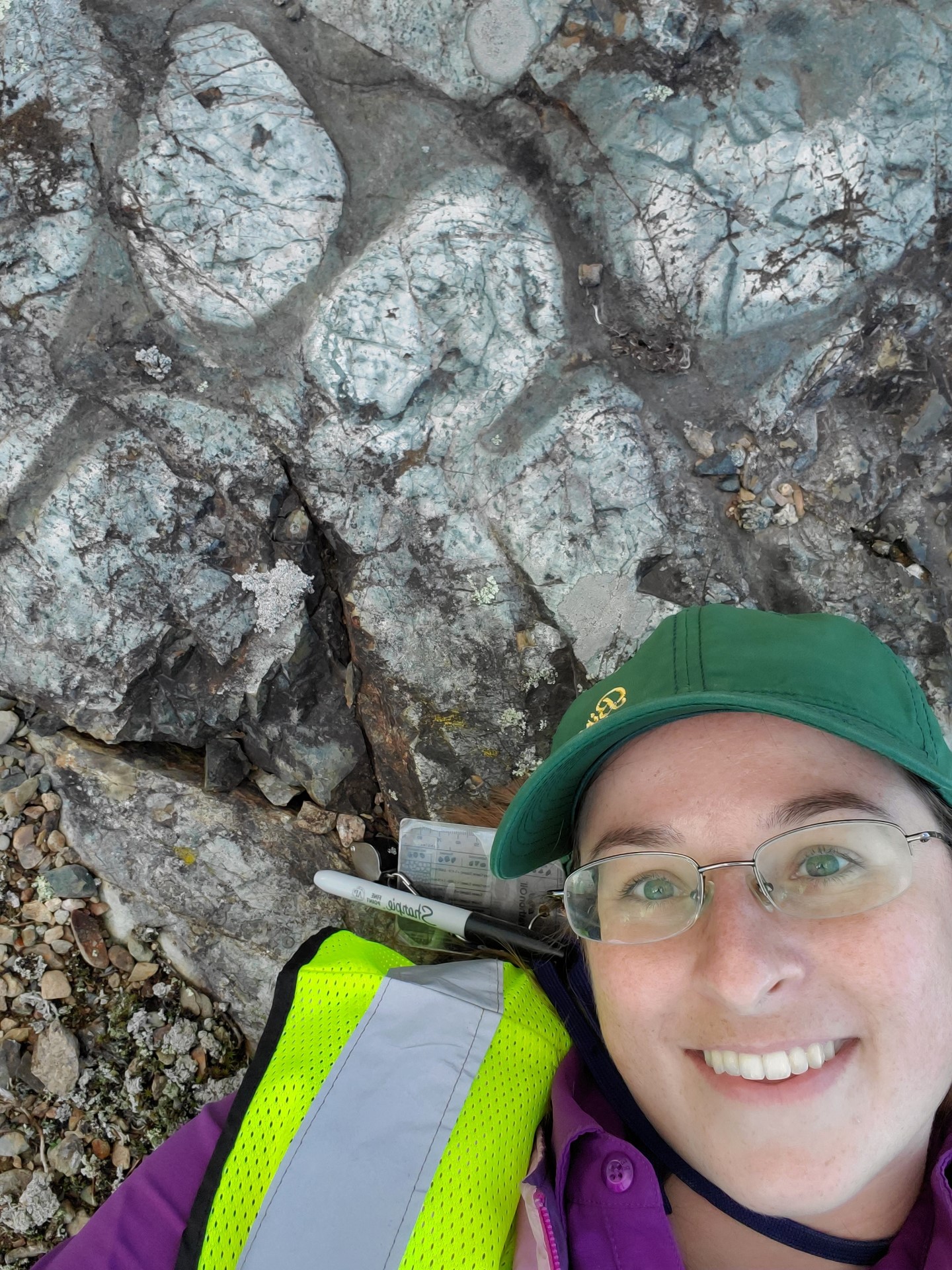
Dr. Clement lounging on pillow basalt along the North Shore of Lake Superior in Minnesota. (Photo/ Annaka Clement)
What book did you read last?
The last book I read for fun was "Good Omens," a captivating and imaginative read.
Since joining the Museum in mid-2023, Dr. Annaka M. Clement has been actively engaged in various projects. Notably, she has played a crucial role in the paleo-mapping of the Rocky Mountain Region, a fascinating endeavor that involves reconstructing ancient landscapes. Dr. Clement's work also encompasses the integration of fossil data into these maps through the utilization of Environmental Niche Modeling. In addition to her mapping initiatives, she has been dedicated to projects involving the study of trilobites in the Cambrian period, the examination of ecosystems in the Devonian Dyer formation and the analysis of environments represented in the rocks at Calhan Paint Mines. Dr. Clement's overarching mission is to inspire the future generation to explore diverse avenues within the realm of science and to promote science literacy, emphasizing the vital role of science in our daily lives.
